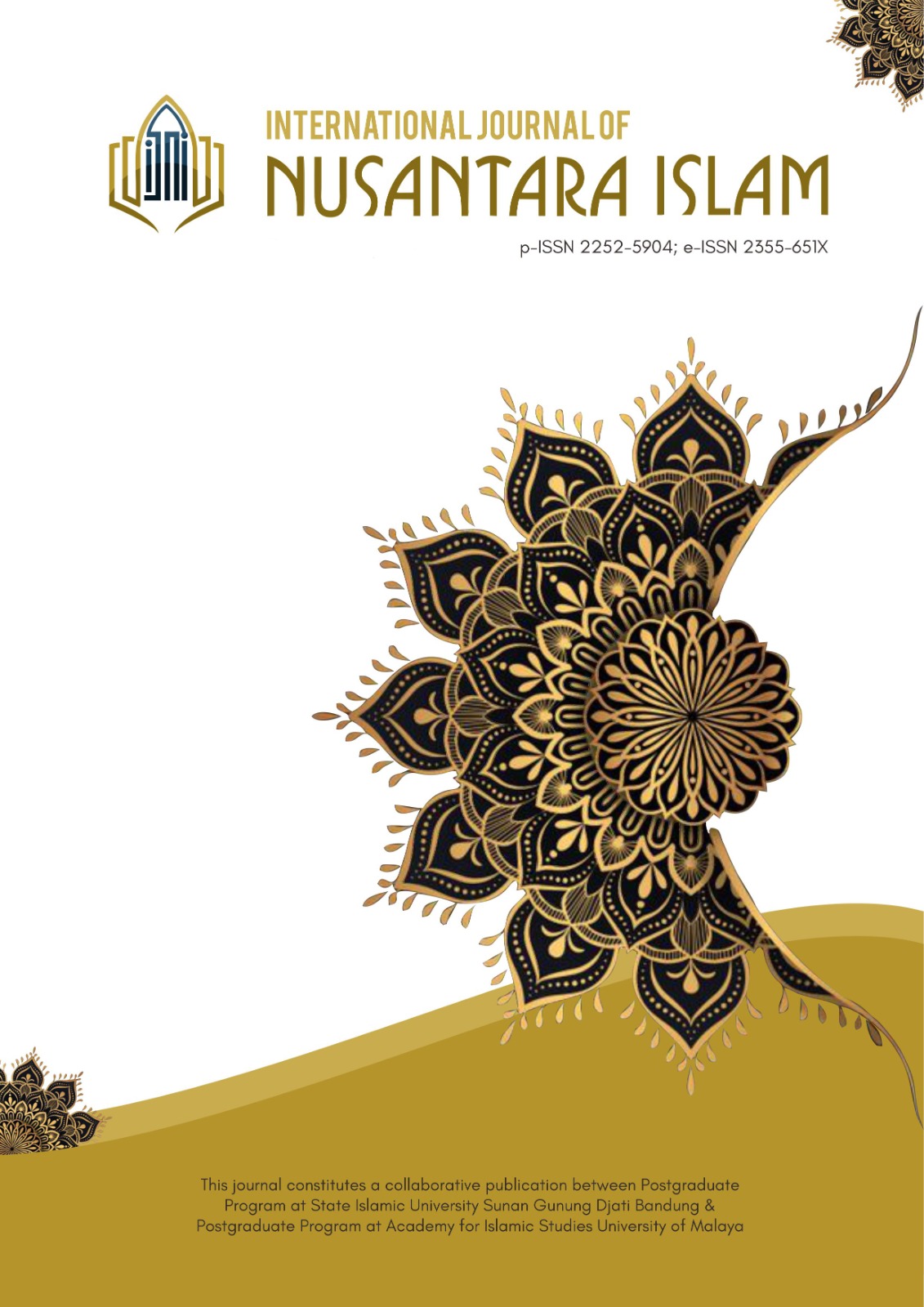Money Supply Model in Muslim Countries
Main Article Content
Abstract
Article Details
The Authors submitting a manuscript do so on the understanding that if accepted for publication, copyright of the article shall be assigned to International Journal of Nusantara Islam, Sunan Gunung Djati State Islamic University.
The copyright encompasses exclusive rights to reproduce and disseminate articles in all forms and media, including reprints, photographs, microfilm, and similar reproductions, as well as translations. Some or all of the contents of this journal can be stored in databases and transmitted in any form and media without the need for written permission from the International Journal of Nusantara Islam, Sunan Gunung Djati State Islamic University.
The Editors and the Advisory International Editorial Board make every effort to ensure that no wrong or misleading data, opinions or statements be published in the journal. In any way, the contents of the articles and advertisements published in the International Journal of Nusantara Islam (IJNI) are sole and exclusive responsibility of their respective authors and advertisers.
References
Al-Arif, M. N. R. (2012). Lembaga Keuangan Syariah. CV Pustaka Setia.
Ayub, M. (2009). Understanding Islamic Finance, A-Z Keuangan Syariah (A. W. Pribadi, Trans.). PT Gramedia Pustaka Utama.
Bordo, M. D., & Capie, F. (1993). Monetary Regimes in Transition. Cambridge University Press.
Chapra, M. U. (2000). Islam dan Pertumbuhan Ekonomi. Gema Insani Press.
Cribb, J. (1986). Money: From Cowrie Shells to Credit Cards. British Museum Publication Ltd.
Hasan, A. (2005). Mata Uang Islami, Telaah Komprehensif Sistem Keuangan Islami. PT Raja Grafindo Persada.
Huda, N. (2009). Ekonomi Makro Islam: Pendekatan Teoritis. Kencana Prenada Media Group.
Isra. (2015). Sistem Keuangan Islam, Prinsip dan Operasi (T. Ellys, Trans.). Raja Grafindo Persada.
Karim, A. A. (2001). Ekonomi Islam Suatu Kajian Kontemporer. Gema Insani Press.
Karim, A. A. (2007a). Ekonomi Makro Islam. PT Raja Grafindo Persada.
Karim, A. A. (2007b). Ekonomi Makro Islami. PT Raja Grafindo Persada.
Kasmir. (2018). Manajemen Sumber Daya Manusia (Teori dan Praktik). PT Raja Grafindo Persada.
Manan, M. A. (1997). Teori dan Praktek Ekonomi Islam. Dana Bhakti Wakaf.
Miller, R. L., & Van Hosse, D. D. (1993). Modern Money and Banking (3rd ed.). McGraw-Hill Book Co.
Mishkin, F. S. (2004). The Economics of Money, Banking, and Financial Markets (7th ed.). Pearson Addision Wesley.
Mujahidin, A. (2007). Ekonomi Islam. PT Raja Grafindo Persada.
Newlyn, W. T., & Bootle, R. P. (1978). Theory of Money. Clarendon Press.
Pohan, A. (2008). Kerangka Kebijakan Moneter dan Implementasinya di Indonesia. PT Raja Grafindo Persada.
Rahardja, P., & Manurung, M. (2004). Teori Ekonomi Makro Suatu Pengantar. Fakultas Ekonomi Universitas Indonesia.
Rahman, A. (1997). Doktrin Ekonomi Islam (Vol. 1). Dana Bhakti Primayasa.
Rivai, V. (2007). Bank and Financial Institution Management. Raja Grafindo Persada.
Sakti, A. (2007). Analisis Teoritis Ekonomi Islam Jawaban Atas Kekacauan Ekonomi Modern. PARADIGMA & AQSA Publishing.
Saud, M. A. (1996). Garis-Garis Besar Ekonomi Islam. Gema Insani Press.
Schwartz, A. J. (1987). Money in Historical Perspective. The National Bureau of Economic Research.
Sidiqi, M. N. (1996). Kegiatan Ekonomi Islam. Bumi Aksara.
Siregar, M. (2001). Menejemen Moneter Alternatif, dalam Dinar Emas Solusi krisis Moneter. Sirac. SEM Institud. Infid.
Soemitra, A. (2014). Bank dan Lembaga Keuangan Syariah. Kencana.
Suprayitno, E. (2005). Ekonomi Islam: Pendekatan Ekonomi Makro Islam dan Konvensional. Graha Ilmu.
Tara, M. A. D. (2000). Strategi Pembangunan Ekonomi Kerakyatan. Nuansa Madani.

